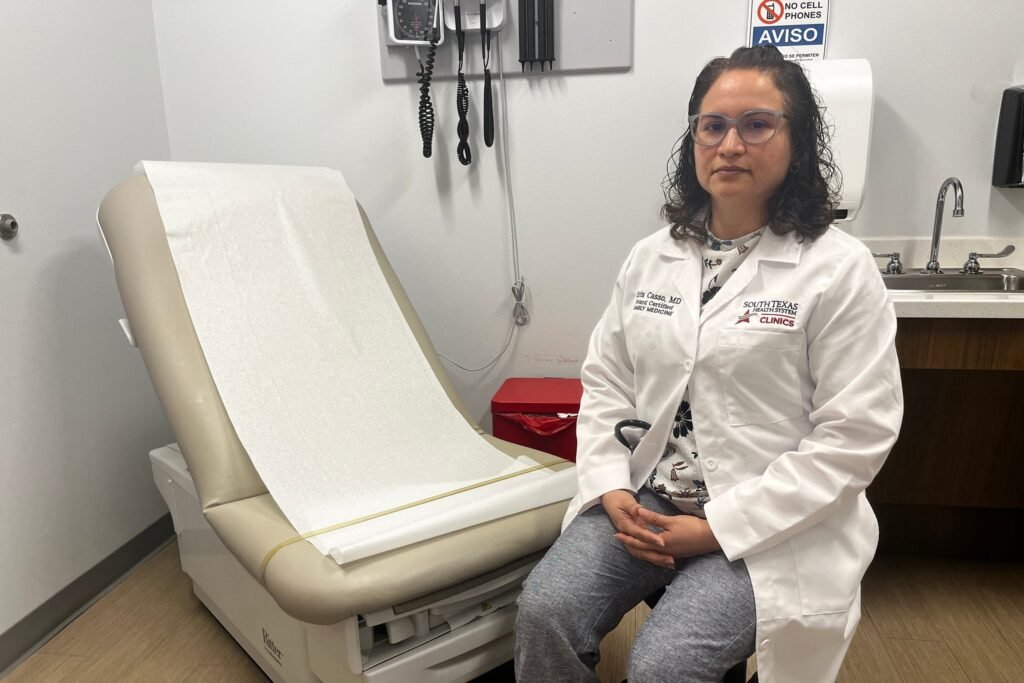The Crisis of Uninsured Healthcare in Starr County, Texas
Understanding the Healthcare Landscape in Rural Communities
Located on the southern border of the United States, Starr County, Texas, showcases a healthcare system under tremendous strain. As one of the poorest areas in the nation, with nearly a third of its population living below the poverty line, the community is witnessing unprecedented challenges. The local health providers are overwhelmed with patients, many of whom lack insurance and have limited access to care.
The Reality of Emergency Care
Dr. Jake Margo Jr., a family medicine physician at Starr County Memorial Hospital, highlights the difficult choices that medical professionals must make daily. On a particularly sweltering June afternoon, he described a typical triage scene where patients with non-emergency conditions had to wait while sicker individuals received priority care. “We’re going to take care of the sickest patients first,” he emphasized, as the emergency room was filled to capacity.
According to Dr. Margo, many residents perceive the emergency room as their first line of healthcare due to the scarcity of primary care options. This misperception leads to untreated conditions, which escalate to emergencies that could have been managed with earlier intervention. Federal law mandates that emergency rooms must treat or stabilize patients, regardless of their ability to pay, putting additional pressure on already stressed resources.
Uncompensated Care and Financial Strain
The repercussions of lacking health insurance extend far beyond individual hardship. Healthcare providers are increasingly strained by the financial burden of caring for uninsured patients. Nationally, an estimated 14 million Americans could lose health insurance as a result of legislative changes made by the Trump administration, including the controversial One Big Beautiful Bill Act. This law allows for significant cuts to Medicaid—one of the primary safety nets for low-income individuals and families.
Health experts, including Sara Rosenbaum from George Washington University, forecast dire consequences: “You can’t disinsure this many people and not have, in many communities, just a collapse of the healthcare system.” The implications of these cuts will be particularly severe in regions like Starr County, which already suffers from one of the highest uninsured rates in the country.
A Future of Increased Uninsured Rates
With the current tax and spending policies, many healthcare experts warn that communities across the U.S. will witness a surge in uninsured residents. Reports suggest that the healthcare system in Starr County, already in a state of "survival mode," may face further hurdles as Medicaid cuts resonate across rural healthcare settings. Providers report feeling the financial pinch, with many warning that cuts will lead to closures of essential services.
For instance, the Gateway Community Health Center in Laredo, nearby Starr County, is struggling to maintain its operations as it anticipates a rise in uninsured patients coinciding with an erosion of available funding. As the need for care remains high, the available resources dwindle, creating a precarious situation for both patients and healthcare providers.
The Human Impact of Policy Changes
Families in Starr County, like Esther Rodriguez’s, showcase the heart-wrenching reality of these healthcare limitations. With her husband earning a modest $600 per week in construction, they cannot afford health insurance. Rodriguez relies on a mobile health clinic, managing her diabetes with limited resources. "If I needed more care, I would go to the ER," she stated, reflecting the precarious position countless families find themselves in.
Moreover, healthcare workers in the community express profound concern over the long-term health of their patients. Dr. Chris Casso, a local primary care physician, shares her distress over seeing patients whose preventable conditions have deteriorated due to delayed care. “It’s heartbreaking,” she commented, underscoring the human cost of policy deficiencies.
Compounding the Crisis: Staff and Facility Challenges
As rural healthcare systems brace for potential Medicaid cuts, many worry about staffing shortages exacerbated by financial instability. Studies show that nearly half of rural facilities could either close or restructure in response to these cuts, leading to the further sidelining of multiple essential healthcare services. The loss of even a few key providers may create significant gaps in care for uninsured individuals.
The education and outreach efforts led by community health workers, like Maria Salgado of MHP Salud, also face threats. This nonprofit plays a critical role in helping residents navigate the complex health insurance landscape. Salgado shares her concerns that funding cuts will hinder outreach efforts, potentially leaving vulnerable populations without necessary assistance to secure coverage.
The Grim Outlook for Uncompensated Care
Inadequate care leads to a vicious cycle of uncompensated services. Projections indicate that uncompensated healthcare costs could soar by $204 billion nationwide in the next decade due to increased uninsured rates resulting from the recent financial policies. For rural hospitals and clinics, every dollar lost from uncompensated care can be catastrophic, further endangering their future viability.
As rural healthcare systems tighten their belts, the ramifications are expected to ripple out, worsening chronic health conditions and diminishing life expectations among already vulnerable populations.
Conclusion: A Call for Awareness and Action
The ongoing challenges for Starr County’s healthcare system exemplify a critical national issue: the impact of policy decisions on community health outcomes. With rising uninsured rates and changing governmental support structures, it is vital for both local and national leaders to recognize the urgent need for sustainable solutions that will safeguard healthcare for the most vulnerable.
The fate of places like Starr County reflects broader truths about healthcare access in America. As we move forward, fostering a deeper understanding of these dynamics will be essential in advocating for policy changes that prioritize the health and well-being of all individuals.
For further insights and updates on healthcare policies affecting communities like Starr County, check sources such as KFF Health News.
This article uses SEO strategies by incorporating relevant keywords, subheadings, and links to authoritative external sources to enhance its visibility and provide added value to the reader.


